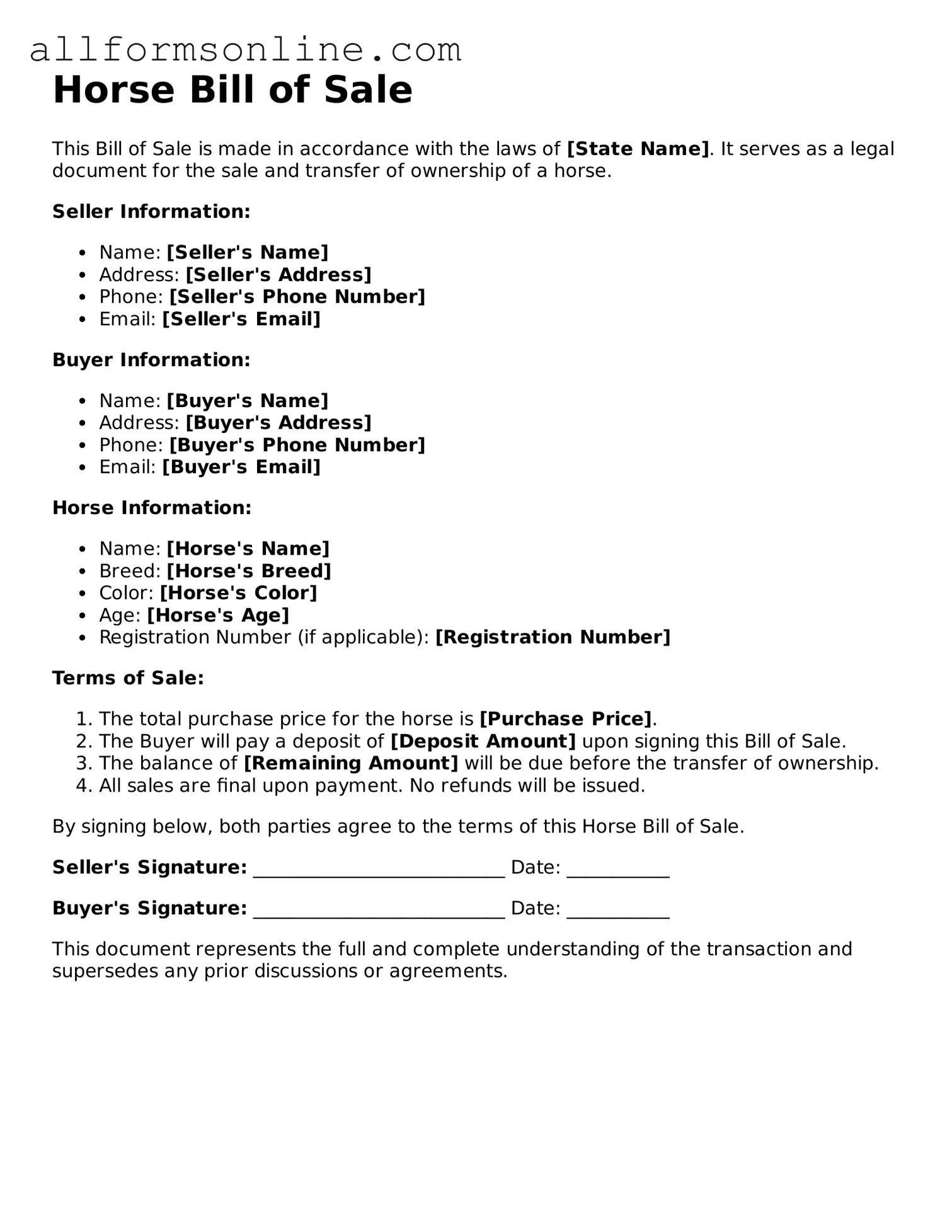What is a Horse Bill of Sale?
A Horse Bill of Sale is a legal document that records the transfer of ownership of a horse from one party to another. It serves as proof of the sale and outlines the terms agreed upon by both the seller and the buyer. This document is essential for ensuring that both parties understand their rights and responsibilities regarding the horse.
Why is a Horse Bill of Sale important?
This document protects both the seller and the buyer. For the seller, it provides evidence that the horse has been sold, which can help avoid disputes later on. For the buyer, it confirms their ownership and can be crucial for registration purposes or in case of future legal issues. Additionally, having a written agreement can clarify any specific conditions of the sale.
What information should be included in a Horse Bill of Sale?
A comprehensive Horse Bill of Sale should include details such as the names and contact information of both the buyer and seller, a description of the horse (including breed, age, color, and any identifying marks), the sale price, payment method, and the date of the transaction. It may also include any warranties or guarantees regarding the horse's health or behavior.
Is a Horse Bill of Sale legally binding?
Yes, a properly executed Horse Bill of Sale is legally binding. Once both parties sign the document, it signifies that they agree to the terms outlined within it. However, for it to hold up in court, it’s crucial that the document is clear and contains all necessary information. In some cases, having it notarized can provide additional legal weight.
Can I use a Horse Bill of Sale for any horse transaction?
Yes, a Horse Bill of Sale can be used for various types of transactions involving horses, whether it’s a sale, trade, or gift. However, the specific terms and conditions may vary depending on the nature of the transaction. It’s essential to tailor the document to reflect the specifics of your situation.
Do I need a lawyer to create a Horse Bill of Sale?
While it’s not mandatory to involve a lawyer, consulting one can be beneficial, especially for high-value transactions or if there are complex terms involved. Many templates are available online, but having a legal professional review the document ensures that it meets all necessary requirements and protects your interests.
What happens if there are disputes after the sale?
If disputes arise after the sale, the Horse Bill of Sale can serve as a critical piece of evidence. It can clarify the terms agreed upon and help resolve misunderstandings. If the issue escalates, parties may need to seek mediation or legal action, where the Bill of Sale can be presented in court to support their claims.
How can I ensure a smooth transaction when using a Horse Bill of Sale?
To ensure a smooth transaction, both parties should communicate openly about their expectations and any concerns. It’s wise to conduct a thorough inspection of the horse before finalizing the sale. Additionally, both parties should read and understand the Bill of Sale thoroughly before signing it, ensuring that all terms are clear and acceptable.
Where can I find a Horse Bill of Sale template?
Horse Bill of Sale templates can be found online through various legal websites, equestrian organizations, or local agricultural extensions. Many of these templates are customizable, allowing you to tailor them to your specific needs. Always ensure that the template you choose complies with your state’s laws regarding horse sales.
